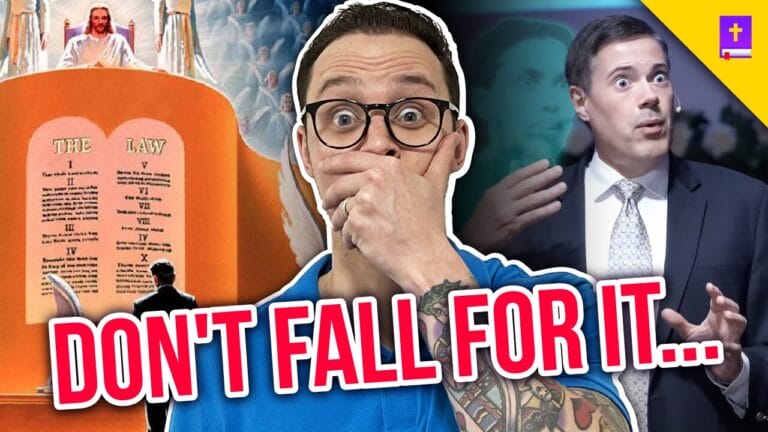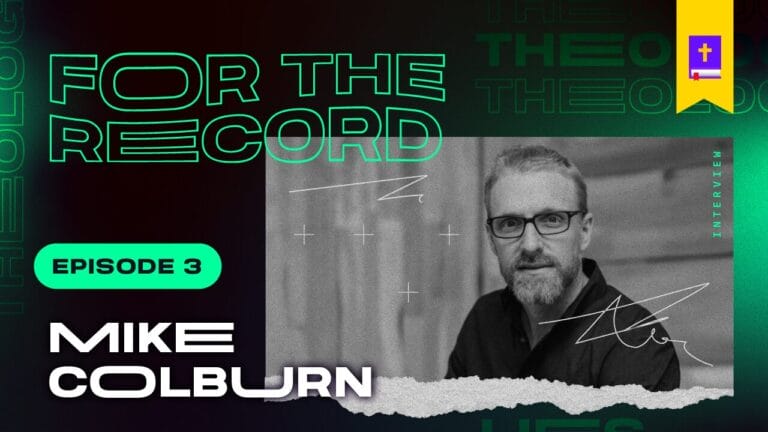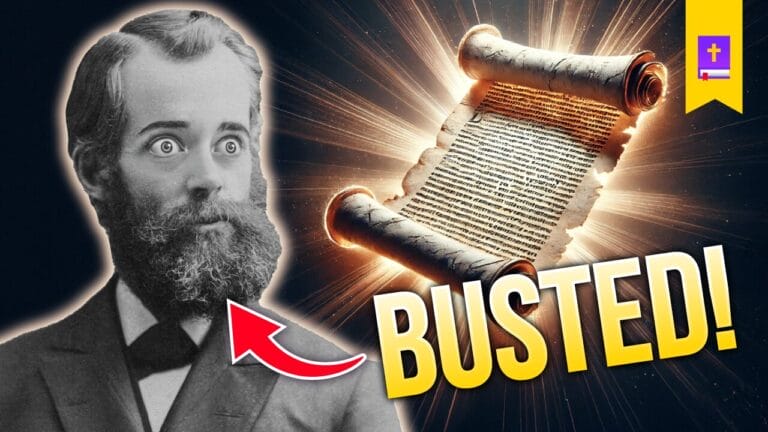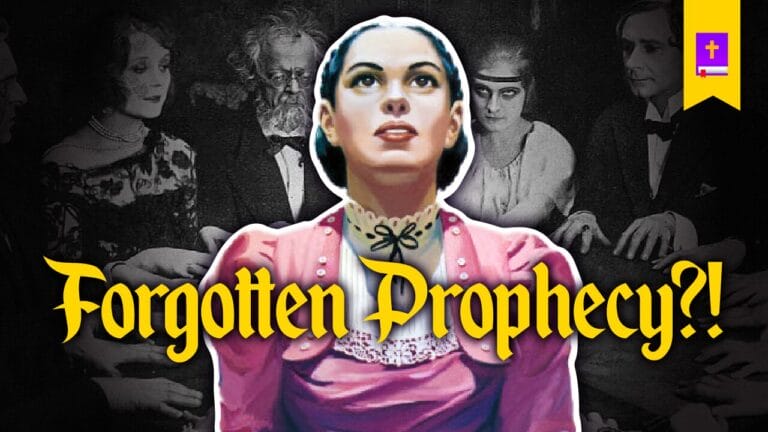Central to Seventh-Day Adventist theology is the belief in a great apostasy which took place almost immediately after the days of the apostles. This is not unique to Adventism, but was also a central tenet of Millerism. As SDA historian George R. Knight writes in his book A Search for Identity: The Development of Seventh-day Adventist Beliefs:
It is important to recognize the impact of the Anabaptist mentality, Restorationism, and Wesleyanism on the understandings and development of Adventism.
George Knight, A Search for Identity: The Development of Seventh-day Adventist Beliefs, pg. 34
All restorationist groups affirm this understanding of a great apostasy in the first century with their group being the move of God in the last days to restore the true church. In the SDA context, the “great apostasy” refers to the work of removing “bible truth” and replacing it with tradition. Knight also comments on this when speaking of the influence the heretical Christian Connexion sect had on the founders of Seventh-Day Adventism:
One branch of the Restorationist movement had special importance to Seventh-Day Adventists: the Christian Connexion. James White and Joseph Bates (two of Adventism’s three founders) were members of the Christian Connexion. Beyond that, Joshua V. Himes (the second most influential Millerite leader) was also a Connexionist minister.
All in all, the Christian Connexion made an extremely large impact on both Millerite Adventism and later Sabbatarian Adventism. Beyond general thinking patterns, two examples will have to suffice. The first is that [Joseph] Bates, the apostle of the Sabbath, would frame the seventh-day Sabbath as one of the things needed to be restored to the church before Christ could return (SDA [1847], 60). A second is that Bates and [James] White brought anti-trinitarianism into Adventism from their Restorationist background. Certain Restorationists pointed out that the Bible nowhere uses the word “trinity.” They eventually came to regard the Trinity as one of those doctrines Christianity adopted during the Middle Ages as a product of the “great apostasy” from scripture.
George R. Knight, A Search for Identity: The Development of Seventh-day Adventist Beliefs, pg. 33
The typical appeal to scripture is 2 Thessalonians 2:3. However, the text and context in no way suggests that there would be universal apostasy.
Ellen White, the SDA Church’s prophetess, expounds upon the SDA understanding in her first published work, Early Writings where she states:
I saw that at last the standard was lowered, and that the heathen were uniting with the Christians. Although these worshipers of idols professed to be converted, they brought their idolatry with them into the church, only changing the objects of their worship to images of saints, and even of Christ and of Mary His mother. As the followers of Christ gradually united with them, the Christian religion became corrupted and the church lost its purity and power. Some refused to unite with them; such preserved their purity and worshiped God alone. They would not bow down to an image of anything in the heavens above or in the earth beneath.
Early Writings, pg. 211
Claiming to be given a vision from God on the matter—she asserts that the church established by the apostles became overrun with what became Roman Catholicism such that people were professing to be Christians, but they were actually idolators.
She continues by saying:
Satan exulted over the fall of so many; and then he stirred up the fallen church to force those who would preserve the purity of their religion either to yield to their ceremonies and image worship or be put to death. The fires of persecution were again kindled against the true church of Christ, and millions were slain without mercy.
Early Writings, pg. 211
She was then supposedly shown that Satan stirred up this “false church” to persecute the true church which they then claim went into hiding in the wilderness, what they call the “Babylonian captivity,” until around the time of the Protestant Reformation.
This event eventually led to the “mystery of iniquity,” or the man of sin being revealed—the Pope:
It has ever been the design of Satan to draw the minds of the people from Jesus to man, and to destroy individual accountability. Satan failed in his design when he tempted the Son of God; but he succeeded better when he came to fallen man. Christianity became corrupted. Popes and priests presumed to take an exalted position, and taught the people to look to them for the pardon of their sins, instead of looking to Christ for themselves.
Early Writings, pg. 213
By this point Christianity was supposedly corrupted and Satan’s “fallen church” had taken over.
Ellen White’s husband, James, wrote about the mystery of iniquity where he explained what Satan through the Pope had infiltrated the church with:
The “mystery of iniquity” began to work in the church in Paul’s day. It finally crowded out the simplicity of the gospel, and corrupted the doctrine of Christ, and the church went into the wilderness. Martin Luther, and other reformers, arose in the strength of God, and with the Word and Spirit, made mighty strides in the Reformation. The greatest fault we can find in the Reformation is, the Reformers stopped reforming. Had they gone on, and onward, till they had left the last vestige of Papacy behind, such as natural immortality, sprinkling, the trinity, and Sunday-keeping, the church would now be free from her unscriptural errors.
James White, Review & Herald, February 7, 1856
The Protestant Reformers would not have agreed with this categorization of themselves and did not believe they were restoring the church. They affirmed the doctrine of the preservation of the church through all ages and times.
For example, notice what John Calvin writes in his Institutes of the Christian Religion regarding the matter:
By the unity of the church, we must understand a unity into which we feel persuaded that we are truly ingrafted. For unless we are united with all the other members under Christ our head, no hope of the future inheritance awaits us. Hence the church is called Catholic or Universal (Augustine, Epist. 48) for two or three cannot be invented without dividing Christ; and this is impossible. All the elect of God are so joined together in Christ, that as they depend on one head, so they are as it is compacted into one body, being knit together like its different members; made truly one by living together under the same Spirit of God in one faith, hope, and charity, called not only to the same inheritance of eternal life, but to participation in one God and Christ. For although the sad devastation which everywhere meets our view may proclaim that no church remains, let us know that the death of Christ produces fruit, and that God wonderfully preserves his church, while placing it as it were in concealment. Thus it was said of Elijah, “Yet I have left me seven thousand in Israel” (1 Kings 19:18).
John Calvin, Institutes of the Christian Religion, Book 4, Chapter 1, Section 2
The Lutheran Augsburg Confession stating the same thing:
Inasmuch, then, as our churches dissent in no article of the faith from the Church Catholic, but only omit some abuses which are new, and which have been erroneously accepted by the corruption of the times, contrary to the intent of the Canons, we pray that Your Imperial Majesty would graciously hear both what has been changed, and what were the reasons why the people were not compelled to observe those abuses against their conscience.
The Augsburg Confession, Article XXI. Of the Worship of the Saints
Martin Luther himself recognizing the fact that the church never went totally apostate and needed restored after a great apostasy:
The Christendom that is now under the papacy is truly the body of Christ and a member of it.
Martin Luther, Luther’s Works, Vol. 40, pg. 232
When the SDA Church tries to appeal to Martin Luther’s Babylonian Captivity of the Church to try and say they are in line with Luther on that subject, this is one of the small evidences that Luther did not believe the same thing that SDA movement does regarding who and what the church is.
English Reformer, William Perkins, in his treatise Reformed Catholic, writes:
By a Reformed Catholic, I understand anyone that holds by the same necessary heads of religion with the Roman Church; yet so as he pares off and rejects all errors in doctrine whereby the said religion is corrupted. How this may be done, I have begun to make some little declaration in this small treatise, the intent whereof is to show how near we may come to the present Church of Rome in sundry points of religion, and wherein we must dissent.
William Perkins, Reformed Catholic (Christian Heritage Series), pg. 3
Notice Perkins language around paring off doctrinal accretions, over and against claiming that the entire trunk of the tree is rotten and needs restored.
Notorious Protestant church historian, Dr. Philip Schaff, in his 1845 book Principles of Protestantism, writes:
In the first place, we contemplate the Reformation in its strictly historical condition, its catholic union with the past. This is a vastly important point, which thousands in our day appear to overlook entirely. They see in the 31st of October, 1517 [when Martin Luther nailed the 95 Thesis], it is true, the birthday of the Evangelical Church, and find her certificate of baptism in the 95 Thesis of Luther; but at the same time cast a deep stain upon the legitimacy of this birth itself, by separating it from all right relation to the time that went before. In this way, all interest is renounced in the spiritual wealth of the Middle Ages, which however belongs to us of right as fully at least it does to the Church of Rome. And what is worse still, the lie is given practically to the Lord’s promise itself: “Lo, I am with you always, even to the end of the world.
Dr. Philip Schaff, Principles of Protestantism (Lancaster Series), pg. 59
Many people, including Adventists, confuse reformation with restoration, but the two are very different. The Protestant Reformers did not believe the church completely fell away and became apostate leading to them then restoring it. But rather, they recognized that Medieval Scholasticism had crowded out and distorted certain theological areas that then needed to be cleaned up via the Word of God. As Calvin’s statement also shows—there’s only one church, not multiples—otherwise Christ would be divided. As individuals attached to that one church in history, the Reformers sought to see correction to what was present. They were not vigilantes or renegades on a mission to rebel and start a new church.
This is different than believing the church fell away entirely and God would raise up a new group to restore the church that fell away or start a new one. A reformation is a clean up of what’s already present whereas a restoration is a revival of something entirely lost. The question that must be asked is what is the church?
A first century great apostasy is necessary in Adventism, not only because Ellen White claimed to be shown it in vision, but because it’s what lays the groundwork for the SDA Church’s rewriting of history to then work themselves in as God’s end times remnant people that has restored apostolic Christianity without any vestiges whatsoever to the “mystery of iniquity.”
However, is this what the Bible is referring to when it talks of the man of sin being revealed and their being a great falling away before that happens?
It’s important to remember that the “last days” began during the ministry of Jesus and His death, burial and resurrection. In Acts 2, Peter makes this point, as does the author of Hebrews in Hebrews 1:1-2. But we also see in 2 Thessalonians 2:7 that the “mystery of lawlessness” was already “at work.” As John writes in 1 John 4:3—the spirit of the antichrist is already at work in the world.
The spirit of antichrist was already at work in the days of the apostles, something the SDA Church agrees. However, they don’t believe that timeframe was considered the last days. They attribute the “last days” to beginning in 1844 with the investigative judgment with the claim being this is foretold in Daniel (Daniel 8:14, 12:4). But very clearly, the “last days” started in the days of the apostles based on the internal biblical witness. And that “spirit of antichrist” and “lawlessness” was present then just as it is today.
Jesus Christ made it clear that the Church would never fall away (Matthew 16:18-19). Jesus as the Head of that Church (Ephesians 1:22-3) has all authority in heaven and on earth and it was by this authority that He sent the Church (the apostles in the immediate context) into the world to disciple the nations (Matthew 28:18-20). Paul even signs off in the third chapter of Ephesians by saying “to him be glory in the church and in Christ Jesus throughout all generations, for ever and ever!” (Ephesians 3:21)
This means that in all generations, since the birth of God’s people, the Church has been present and never fell away or became totally overrun in apostasy such that it needed to be restored. This would mean that Jesus, who possesses all authority in heaven and on earth, failed in keeping His word and doesn’t actually possess all authority to protect His bride and lead her into all truth.
Which means that God has been providentially leading, guiding, and protecting the Church, even in the lowest points in history. Which is why Protestants believe that the Church is not infallible and can err and the Scriptures need to function as the sole infallible cleansing mechanism to correct and redirect in accordance with scripture.
Many people, including Adventists, confuse reformation with restoration, but the two are very different. The Protestant Reformers did not believe the Church completely fell away and became apostate leading to them then restoring it. But rather, they recognized that Medieval Scholasticism had crowded out and distorted certain theological areas. This is different than believing the church fell away entirely and God would raise up a new group to restore His church that fell away. A reformation is a clean up of what’s already present whereas a restoration is a revival of something entirely lost.
The Latter-Day Saints (Mormons) claim this same thing. As do the Jehovah’s Witnesses, Christadelphians, the Church of Christ, Seventh-Day Adventists and numerous other sects out there.










